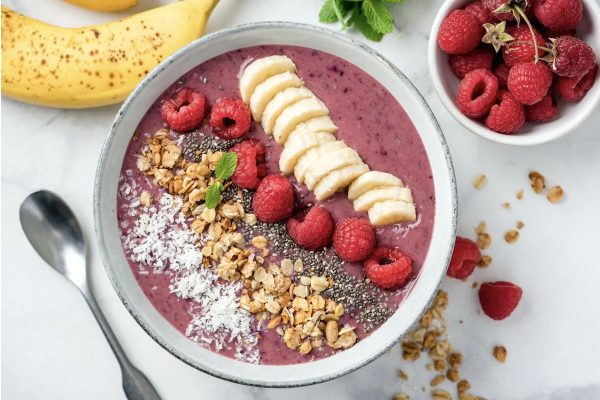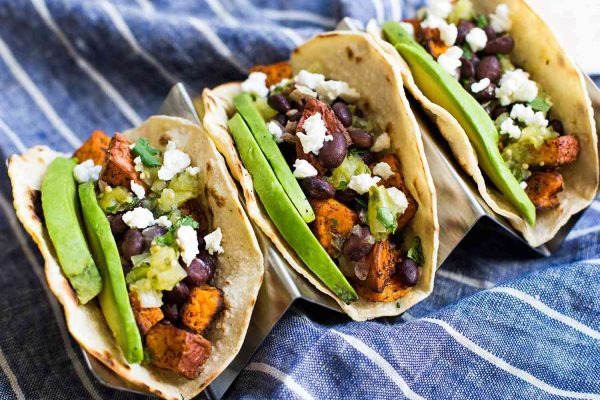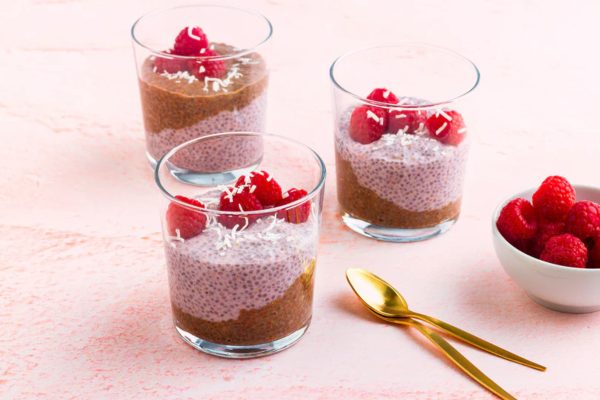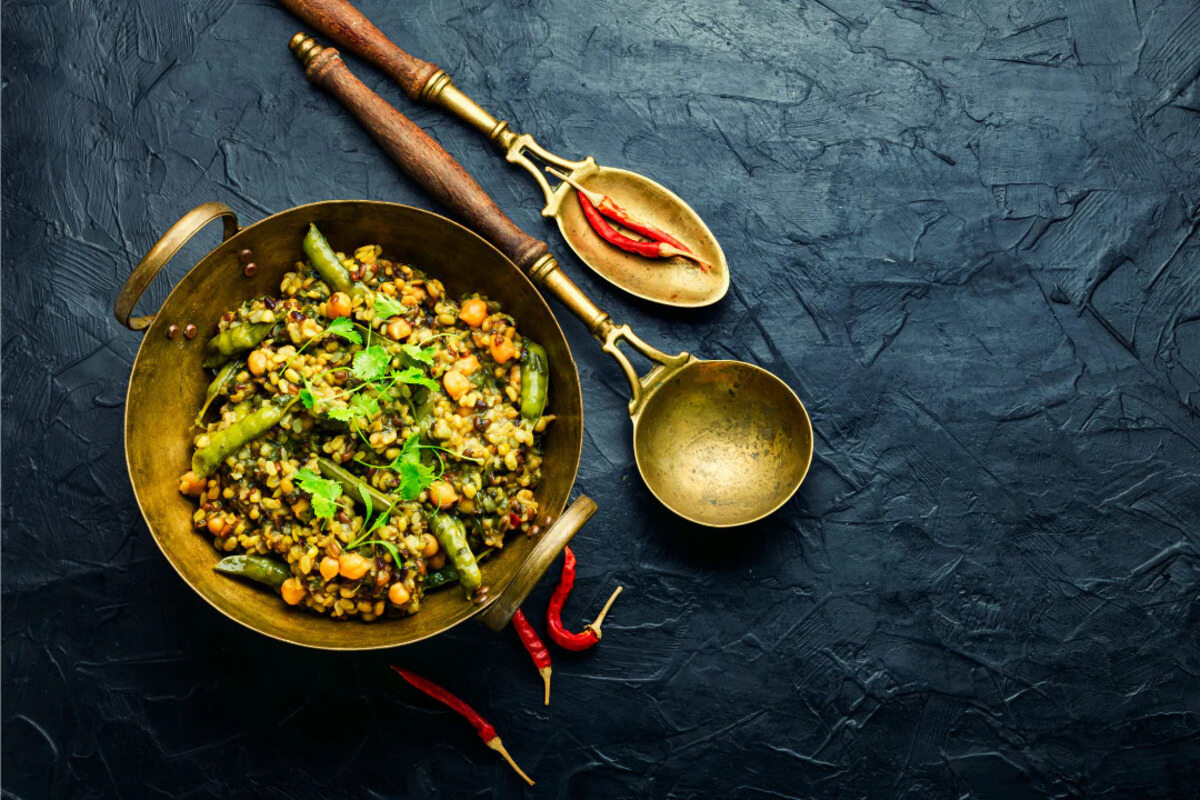A Fresh Way to Eat Well
The Mediterranean Chickpea and Cucumber Salad isn’t just delicious—it’s nutritionally functional. Each ingredient contributes to gut health and natural energy support, making it true functional food.
Chickpeas are rich in plant-based protein and fiber, both essential for digestive function. They slow digestion, stabilizing blood sugar and extending energy release.
Cucumber hydrates and cools the body. Its water content helps regulate body temperature and enhances nutrient transport to cells. It also contains antioxidants that reduce inflammation.
Tomatoes and red onions contain lycopene and quercetin—compounds with anti-inflammatory properties. Along with parsley and mint, they offer chlorophyll and volatile oils that support liver function and fresh breath.
Olive oil provides heart-healthy fats and, when paired with lemon juice, enhances absorption of fat-soluble vitamins like A, D, E, and K. Herbs and spices also have natural digestive properties that ease the stomach.
Combined, this salad works as a light detoxifying meal that boosts energy and soothes digestion.
Ingredients for a Fresh Start
The Mediterranean Chickpea and Cucumber Salad is a light yet nutrient-packed dish perfect for those who want to eat healthily without feeling too full. It offers fiber, hydration, plant-based protein, and lots of antioxidants—all of which help maintain energy throughout the day. In this section, you’ll discover every ingredient that makes up each cooling, vibrant serving of this salad.
Base Ingredients
The base of this salad is made up of simple yet powerful ingredients that give it body and texture:
- 1 can (400g) chickpeas, rinsed and drained
- 1 large cucumber, diced
- 1/2 cup diced red onion
- 1 cup cherry tomatoes, halved
- 1/4 cup chopped fresh parsley
- 1/4 cup chopped fresh mint
- 1/4 cup crumbled feta cheese (optional for vegan)
- 2 tablespoons extra virgin olive oil
- Juice of 1 lemon
Spices and Flavor Enhancers
These bring out the Mediterranean character in every bite—a balance of saltiness, tang, and earthiness:
- 1/2 teaspoon sea salt
- 1/4 teaspoon ground cumin
- 1/4 teaspoon ground black pepper
- 1/8 teaspoon sumac (optional, but adds a tangy Mediterranean touch)
- 1/4 teaspoon dried oregano
Optional Toppings
For added texture, flavor, and visual appeal, here are some optional toppings you can include:
- Sliced Kalamata olives
- Toasted pine nuts or sunflower seeds
- Avocado cubes
- Microgreens
- Drizzle of tahini or yogurt dressing
How to Build the Perfect Salad
No cooking, no complex steps—the Mediterranean Chickpea and Cucumber Salad is a great example of how simple ingredients can come together to create a refreshing and satisfying dish. Here’s a step-by-step guide:
Prepping the Ingredients
Start by prepping the core ingredients. Rinse the canned chickpeas under cold water to remove excess sodium and preservatives. Drain well and pat dry with a kitchen towel or paper towel to avoid a watery salad.
While drying the chickpeas, chop the cucumber, red onion, cherry tomatoes, parsley, and mint. Make sure everything is evenly diced for better texture and presentation. If using cucumber, English cucumbers are ideal since they don’t need to be seeded.
If using fresh lemon, zest it before juicing. You can use the zest as a garnish or mix it into the dressing for added citrus aroma.
Mixing the Salad
In a large mixing bowl, combine the chickpeas, cucumber, tomatoes, red onion, parsley, and mint. Gently mix with a salad spoon or spatula, being careful not to mash the chickpeas.
In a separate small bowl, whisk together the olive oil, lemon juice, cumin, pepper, oregano, salt, and sumac if using. Pour the dressing over the salad and toss until evenly coated.
Once the base salad is ready, fold in the crumbled feta cheese. If you’re vegan, you can skip this or use plant-based cheese instead.
Adding the Final Details
After mixing, taste the salad and adjust seasoning if needed—add a bit more lemon juice for acidity or olive oil for a richer texture.
If serving immediately, transfer to a serving bowl and add optional toppings like olives, pine nuts, or avocado. If serving later, cover the bowl and refrigerate for 30 minutes to allow the flavors to meld.
You can enjoy this salad as a light meal, side dish, or packed lunch. Best served chilled, especially on hot days or post-workout.
Flexible Flavors: How to Make It Your Own
The beauty of the Mediterranean Chickpea and Cucumber Salad lies not just in its flavor—but in its flexibility. It’s easy to adjust for different tastes, dietary needs, or seasonal availability.
If you want a protein boost, add boiled eggs, grilled tofu, or tempeh. For non-vegans, grilled chicken breast or tuna chunks give a Mediterranean flair.
For a low-carb version, reduce the chickpeas and increase the cucumber, lettuce, and spinach. This cuts starchy carbs while keeping the nutrients.
Want a creamy version? Use tahini-lemon dressing or mix in coconut yogurt for plant-based creaminess. For a tangy twist, add chopped pickles or capers.
In winter, try adding roasted beets or steamed cauliflower. In summer, replace tomatoes with watermelon cubes for a cooling variation.
This salad is a great canvas—you can experiment with sweet, tangy, savory, or spicy flavors depending on your mood.
Perfect for Packed Lunch and Light Dinners
This salad travels well and is perfect for on-the-go meals. Since it holds up well, it’s one of the best meal prep options for busy days.
Store it in an airtight glass container, keep the dressing separate if saving for later, and refrigerate for up to three days. Keep it chilled to maintain freshness and cucumber crunch.
On days when you can’t leave your desk or don’t have access to a microwave, this salad is your answer. Just grab a fork and eat anytime. You can also serve it in lettuce wraps or flatbread as a sandwich alternative.
For dinner, pair it with a hot lentil soup or roasted veggies for a light yet complete meal. It also makes a refreshing starter or side dish at a Mediterranean-themed gathering.
Family Approved Healthy Meal
Many kids shy away from salads, but there are ways to make them appealing. The key is to make it colorful, crunchy, and fun to eat.
Replace red onions with mild scallions or skip them if too strong. Use sweet cherry tomatoes and include cucumber for a juicy, cooling bite.
Use chopped olives, crumbled cheese, and toasted seeds as toppings for texture. You can also mix the salad with cooked couscous or rice for a heartier version.
For picky eaters, turn the salad into a taco filling or sandwich spread with pita bread. Sometimes, all it takes is a fun presentation to win over the whole family.
Excellent for Hot Weather and After-Workout Meals
In hot weather or after exercise, the body craves hydration and nutrients. This salad provides both water-rich veggies and electrolytes from lemon juice and salt.
It’s not oily or heavy on the stomach, so it’s easy to eat even when it’s hot. Best served chilled, it’s ideal for athlete recovery meals or health-conscious individuals.
For a more carb-heavy version post-workout, add cooked quinoa or bulgur wheat. It offers extra energy while keeping the salad’s cooling profile.
When you’re tired or stressed, a light meal like this helps lift your spirits, relax your system, and recharge your energy.
Seasonal Twists to Keep It Interesting
Want to enjoy this salad year-round? Try these seasonal adaptations:
Spring: Add asparagus tips, radish, and baby spinach
Summer: Mix in watermelon cubes, peaches, or grilled zucchini
Fall: Try roasted pumpkin, kale, and dried cranberries
Winter: Add steamed broccoli, red bell pepper, and quinoa
Every season brings new veggies and herbs that can add fresh flavor and texture. Salad never gets boring when you follow the seasons.




